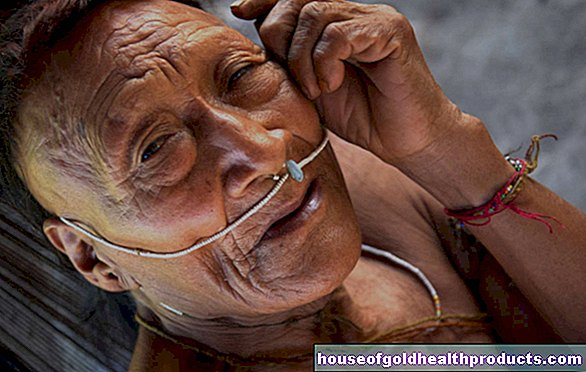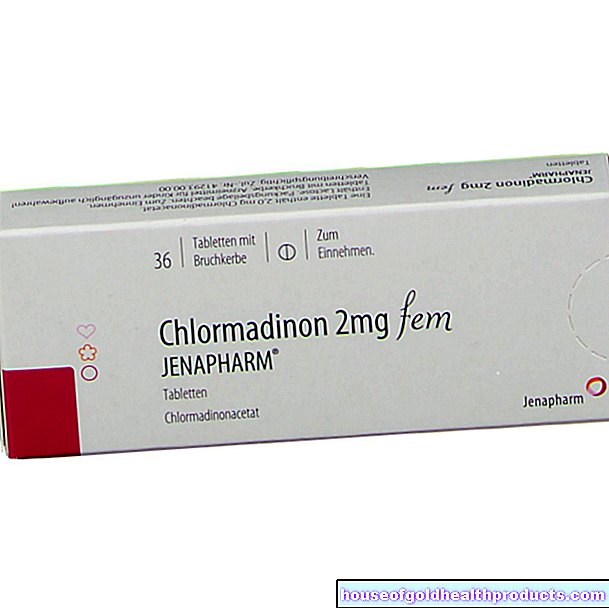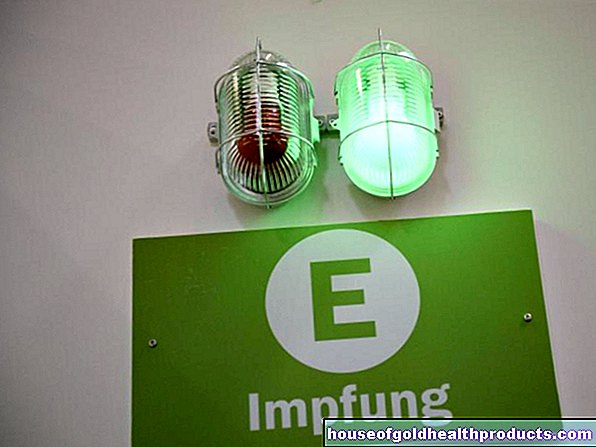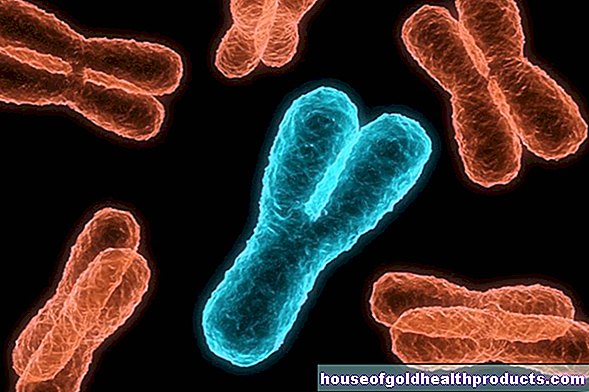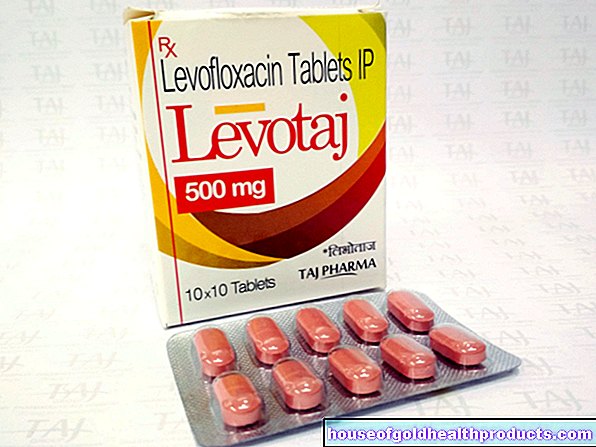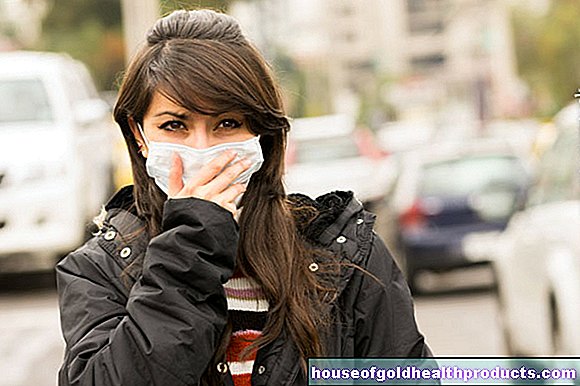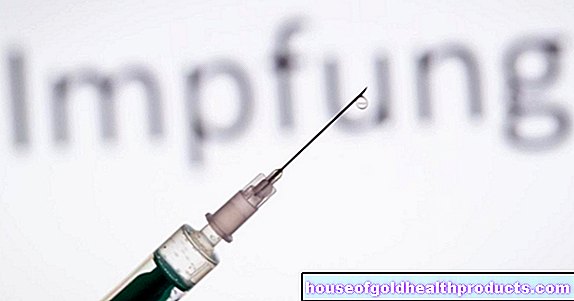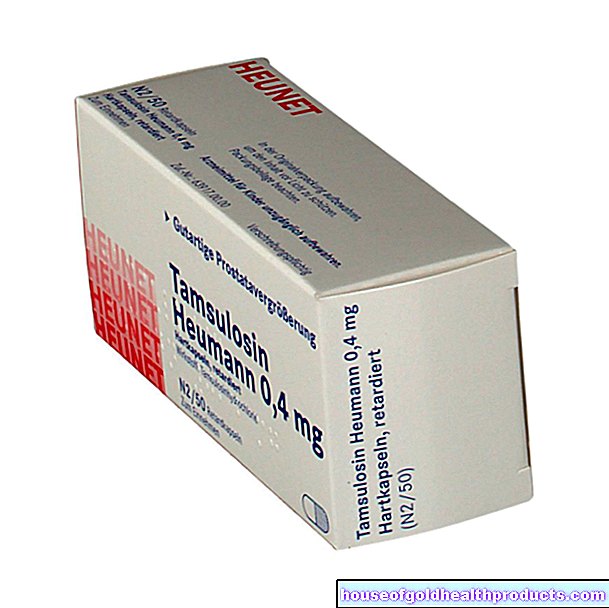Genital warts
and Martina Feichter, medical editor and biologistFlorian Tiefenböck studied human medicine at the LMU Munich. In March 2014, he joined as a student and has supported the editorial team with medical articles ever since. After receiving his medical license and practical work in internal medicine at the University Hospital Augsburg, he has been a permanent member of the team since December 2019 and, among other things, ensures the medical quality of the tools.
More posts by Florian TiefenböckMartina Feichter studied biology with an elective subject pharmacy in Innsbruck and also immersed herself in the world of medicinal plants. From there it was not far to other medical topics that still captivate her to this day. She trained as a journalist at the Axel Springer Academy in Hamburg and has been working for since 2007 - first as an editor and since 2012 as a freelance writer.
More about the experts All content is checked by medical journalists.
Genital warts (pointed condylomas, condylomata acuminata) are benign skin growths in the genital area. They are among the most common sexually transmitted diseases. Genital warts are caused by an infection with the human papillomavirus (HPV). After infection with the virus, it takes four weeks to eight months for the first warts to form (incubation period). Read everything you need to know about genital warts here!
ICD codes for this disease: ICD codes are internationally recognized codes for medical diagnoses. They can be found, for example, in doctor's letters or on certificates of incapacity for work. A63
Genital warts: appearance and symptoms
Genital warts are benign growths on the skin or mucous membrane. These warts are usually found in the genital area (less often in other parts of the body). This is why they are also called genital warts. Another name is "pointed condyloma":
When they emerge, the upper (mucus) layer of skin (epidermis) grows pointedly upwards, and pinheads up to several centimeters in size are formed. The soft, warty structures are reddish, gray-brownish or whitish in color. They usually occur in clusters and can develop into larger papillomatous nodes or plate-like structures ("cockscomb").
In addition to the classic genital warts type, there are also special forms. These include, for example, the condylomata plana (Latin planus = flat). It is the flat appearance of common genital warts.
In addition, in rare cases the genital warts develop into so-called "giant condylomas" (Buschke-Löwenstein tumors or Condylomata gigantea). These large, cauliflower-like tumors destroy the tissue and can turn into a cancerous tumor (verrucous squamous cell carcinoma).
Genital warts in women
If a woman has genital warts, they are often located on the posterior commissure (the posterior junction of the labia majora in front of the perineum) or on the labia. But they can also occur in the vagina and on the cervix, on the anus and in the anal canal and in the urethra. In the case of genital warts in the urethra, warts usually appear at the same time in the external genital area (e.g. on the labia).
Genital warts in men
The warts are usually located on the penis - preferably on the foreskin ligament (frenulum), on the penile furrow (ring-shaped depression behind the glans) and on the inner sheet of the foreskin. Circumcised men no longer have a foreskin and are less prone to genital warts. If they do get some, the genital warts can colonize the penis trunk and penis root.
As in women, condylomata acuminata can form in the urethra, anal canal, and anus in men. Male homosexuals in particular are prone to such warts on the anus.
Genital warts on other parts of the body
Genital warts love warm, humid conditions. These are mainly found in the genital and anal area, which is why they almost always arise here. They rarely grow on other parts of the body. For example, HP viruses can get from the genital area into the oropharynx through oral sex and lead to the formation of warts. But that happens very rarely. Condylomata acuminata are also rarely found, for example in the navel, under the female breasts or in the armpits.
Genital warts in infants and children
If pregnant women suffer from genital warts in the genital area, they can transmit the causative virus to the child at birth. This increases the risk of the newborn developing what is known as juvenile laryngeal papillomatosis. These are genital warts-like nodules in the area of the larynx and vocal cords. Possible symptoms include hoarseness, coughing, difficulty swallowing, and audible breathing sounds.
General genital warts symptoms
Genital warts usually do not cause any symptoms, so they are asymptomatic. For many sufferers, condylomata acuminata are then a purely cosmetic problem, which can, however, cause psychological problems (feelings of shame, etc.).
Genital warts can rarely itch, burn or pain. Some women also report increased vaginal discharge. In particular, the surface of larger genital warts can tear open and bleed, for example during sexual intercourse. If the genital warts grow into the urethral opening, urination can also cause discomfort (bleeding, weak urine stream).
Sometimes genital warts cause pain during sex (dyspareunia). That can be very stressful psychologically. Some patients also fear that they (or their partner) will develop cancer or become sterile from genital warts. Don't be afraid to see a doctor about genital warts and tell him about your worries and fears!
Genital warts: causes and risk factors
The causes of warts in the genital area and many warts on other parts of the body (extragenital warts) are so-called human papillomaviruses, also known as human papillomaviruses or HPV for short. There are over 200 different types of HPV, most of which are harmless.
Harmless HP viruses rarely cause malignant diseases, which is why they are also called low-risk types. The best known are types HPV 6 and HPV 11. They can be detected in most cases of genital warts. In some cases, other low-risk HPV causes genital warts symptoms as well. A total of around 40 types of HPV can infect the genital anal area.
High-risk HPV rarely occurs in genital warts
If low-risk types lead to degeneration only very rarely, infections with so-called high-risk HPV (high-risk HPV) are much more frequently linked to cancers in the genital area. In almost all cases of cervical cancer (cervical cancer), the involvement of high-risk HPV types can be demonstrated. Usually it is HPV 16 or 18. An infection with high-risk HPV can also be involved in the development of other cancers in the genital area such as penile cancer or vaginal cancer. In contrast, high-risk HPV types can only be found extremely rarely in the cells of genital warts.
How can you get infected with genital warts?
Genital warts are among the most common sexually transmitted diseases. They are mostly transmitted through direct skin or mucous membrane contact, most often through unprotected sexual intercourse. Especially if you change sexual partners more often, there is a risk of infection. Condoms can reduce the risk, but not 100 percent. Because they do not cover all areas of the skin that can be infected by the HP virus.
Genital warts can also be infected through contaminated objects such as sex toys. Infection through shared contaminated towels or bath sponges as well as through shared bathing cannot be ruled out either.
Oral intercourse can increase the risk of an HPV infection in the mouth and throat area - and thus also the risk of genital warts-like skin thickening at this point.
In pregnant women, genital wart triggers can be passed on to the newborn at birth.
If children with common warts scratch their genital or anal area, genital warts may develop. The trigger is then usually HPV type 2, but sometimes also type 27 or 57. In this case, experts speak of autoinoculation (self-infection).
Caution: If children have warts in the genital or anal area, clarification is always necessary because there is a suspicion of sexual abuse!
Risk factors
Various factors increase the risk of contracting genital HP viruses, which either cause genital warts or lead to cervical cancer. These include:
- first sexual contacts before the age of 16
- unprotected sexual intercourse (no condoms)
- Smoking (weakens the protective and barrier function of the mucous membrane)
- Birth at a young age and multiple births (pregnancies change the lining of the uterus, making it more prone to infection)
- weakened immune system
- other genital infections such as chlamydia or genital herpes
Genital warts: prevention
There is no definitive protection against HPV infections and consequently genital warts. However, some measures can help reduce the risk of genital warts. The advantage of doing this is that these steps can prevent other, more serious consequences of HPV as well. These include primarily malignant diseases such as cervical cancer or penile cancer.
Practice safe sex!
Unprotected sex is the main risk factor for sexually transmitted diseases like genital warts. Brief skin contact is sufficient for genital warts to be transmitted, but studies on other HPV diseases have shown that the success of treatment with condom protection is greater and lasts longer. Protect yourself with condoms during both vaginal and anal sex.
You should also use condoms or "dental dams" for oral sex. They also reduce the risk of infection.
Go to checkups!
This enables genital warts and other HPV-related changes in the mucous membrane to be detected and treated at an early stage. As with almost all diseases, the same applies here: the earlier the diagnosis and treatment, the better the prognosis!
Always think of your sexual partners too!
As with all sexually transmitted diseases, genital warts should have their sexual partner examined. So if you are diagnosed with genital warts, it is important that you tell your sexual partner (s) about it. This will prevent it from spreading and protect your partner from potentially serious diseases (including cancer)!
Get yourself or your children vaccinated!
For several years there has been a vaccination against certain types of human papillomavirus (HPV vaccination). It is recommended by the Standing Vaccination Commission of the Robert Koch Institute (STIKO) to all girls between nine and fourteen years of age, preferably before the first sexual activity. In June 2018, the STIKO extended the vaccination recommendation to boys between nine and fourteen years of age.Two different vaccines are available on the German market: One (double HPV vaccine) protects against infection with the most important causes of cervical cancer (HPV 16 and 18). The second vaccine (nine-fold HPV vaccine) is also effective against other types of HPV, including HPV 6 and 11 - the two most common causes of genital warts.
Genital warts: diagnosis and examination
In many cases, genital warts do not cause any problems. Nevertheless, you should always have warts in the genital area examined. It may be a malignant disease process. Harmless genital warts can also cause discomfort, especially if they increase in size. In addition, the risk is increased that high-risk HPV has infected the skin or mucous membrane in the genital area elsewhere and led to barely visible changes there.
Necessary examinations for the clarification of genital warts are carried out by specialists: Possible contact persons are gynecologists (for women), urologists (for men), dermatologists (dermatologists) and venereologists (specialists in sexually transmitted diseases).
Medical history (anamnesis)
First, the doctor asks the patient about any symptoms that may arise. Don't be afraid to answer questions about your sexual activity as well, as it plays a crucial role in genital warts. The doctor also makes a note of general risk factors such as medication, smoking, or other pre-existing conditions that may weaken the immune system. For example, you may be asked the following questions:
- Where exactly do you have complaints?
- Where and which skin changes did you notice? Is it possible that there are significant warts in the genital area?
- Have you noticed any genital bleeding outside of the menstrual cycle, such as after intercourse?
- Have you often changed your sexual partner? Do you use condoms during sex?
- Do you know any previous illnesses?
- Have you already had a sexually transmitted disease in the genital area such as genital warts, chlamydia or syphilis in the past?
Investigations in genital warts
The doctor can clarify genital warts in men as part of a physical examination. He primarily examines the glans of the penis, the urethral outlet (Meatus urethrae externus) and its enlargement located there (Fossa navicularis). Under certain circumstances, he spreads the urethral opening so that the last centimeters of the urethra can be examined (meatoscopy). If there are genital warts at the urethral opening, the doctor will perform a urethral examination (urethroscopy). First, however, the genital warts visible from the outside are treated so that the human papillomaviruses are not carried into the depths of the urethra when they are mirrored.
Genital warts in women often appear in the area of the labia or on the anus and are then usually easy to recognize. In order to discover all warts in the genital area, further examinations are necessary. The gynecologist will palpate the vagina as part of a gynecological examination and then examine it with a speculum ("mirror"). Palpation is important because specula sometimes cover deep-seated genital warts or other growths.
The doctor also takes a smear from the mucous membrane on the cervix and cervix. Then he stains the smear and examines it under the microscope. This "Pap test" can reveal malignant cell changes such as those caused by an HPV infection at an early stage.
The doctor can also perform a colposcopy to clarify genital warts in the woman's internal genital area. He examines the vagina and the cervix using a special microscope (colposcope). In this way, the smallest genital warts and other changes or bleeding in the female genitals can be detected.
Further investigations
In the case of warts on the anus, the doctor will palpate the anus and anal canal with your finger (digital rectal examination). He can also perform an anoscopy (mirroring of the anal canal): He examines the anal canal using a rigid endoscope (anoscope).
Alternatively, a proctoscopy is also possible: A rigid endoscope, the proctoscope, is also used here. With its help, the doctor can see not only the inside of the anal canal, but also the lower section of the rectum. Genital warts very rarely grow above the dentate line. At this borderline on the inner wall of the intestine, the structure of the mucous membrane changes: The covering layer (squamous epithelium) of the anal canal merges into the mucous membrane of the rectum (highly prismatic epithelium). Genital warts that grow beyond the line indicate a weak immune system. In order not to spread HPV, externally visible genital warts are usually removed before a proctoscopy.
If the other tests on genital warts are unclear, the doctor may be able to do an acetic acid test. He dabs the suspicious skin / mucous membrane areas with three to five percent acetic acid (in women, for example, as part of a colposcopy). Hardly recognizable genital warts turn whitish. However, the test result is not very reliable, which is why the method is not routinely recommended.
Histological examination of removed warts
Doctors usually diagnose genital warts with the naked eye. However, if he has doubts, he removes the wart as a whole and has it examined in the laboratory for a histological examination. A genital wart is also removed and examined in the laboratory in the following situations:
- The treatment doesn't work.
- After successful treatment, new genital warts develop quickly.
- The genital warts have a diameter of more than one centimeter.
- There is a suspicion of giant condylomas (Buschke-Löwenstein tumors).
- The skin changes are atypical. For example, they are pigmented, multicolored, bleeding or fused with the surrounding tissue.
- The patient has an immunodeficiency.
HPV detection
The genome of the HP virus does not usually have to be detected in genital warts. Exceptions are giant condylomas: Here the viruses should be detected molecularly and the virus type identified.
HPV detection (including virus typing) may also be indicated in children with genital warts. If, for example, HPV 2 is identified as the cause of the warts, this speaks more for the transmission of common skin warts and not for sexual abuse as the cause of the genital warts (the latter are usually caused by HPV 6 or 11).
Exclusion of other sexually transmitted diseases
With genital warts, the risk of other sexually transmitted diseases is increased. Therefore, the doctor will also examine or test patients for syphilis, gonorrhea, HIV, chlamydia and hepatitis B and C.
Differentiation of genital warts from other skin changes
There are some diseases that cause skin changes similar to those of the genital warts (differential diagnoses). In order to be able to distinguish it, it is sometimes necessary to take a tissue sample, which is then examined in detail. Important differential diagnoses for genital warts are:
|
illness |
properties |
|
Condylomata lata |
|
|
Hair follicle inflammation (folliculitis) |
|
|
Dellular warts (Mollusca contagiosa) |
|
|
Seborrheic warts |
|
|
Soft fibroids |
|
|
free sebum glands |
|
|
Skin tags |
|
|
Hirsuties papillaris vulvae (woman) Hirsuties papillaris penis (man) |
|
|
Lichen nitidus |
|
In addition, the doctor must differentiate genital warts from possible malignant skin changes (precursors of cancer or cancer).
Genital warts: treatment
treatment
There are different ways of treating genital warts. The doctor and patient will decide together on the therapy plan. When selecting the therapeutic measures, the following factors in particular should be taken into account:
- Size, number and location of the genital warts
- Type and success of previous treatments
- possible underlying and concomitant diseases (HIV, chlamydia, etc.)
- Wishes of the patient
- Experience of the attending physician
The sexual partner should also be examined for genital warts and treated if necessary. This prevents partners from infecting each other again and again.
Genital warts treatment with medication
The genital warts can be treated with externally (topically) applicable medication. The preparations are available as a cream / ointment or liquid (solution, acid) and are applied directly to the warts. Depending on the active ingredient, the medicinal genital warts treatment is carried out either by the doctor or by the patient himself. In any case, careful and regular use of the medication is critical to the success of the therapy.
In the following table you will find a list of the various active ingredients for genital warts therapy, instructions for use and the most important side effects (NW):
|
drug |
user |
Remarks |
|
Podophyllotoxin 0.5% solution 2nd choice: Podophyllotoxin 0.15% cream |
patient |
|
|
Imiquimod 5% cream |
patient |
|
|
Sinecatechine 10% ointment |
patient |
|
|
Trichloroacetic acid |
doctor |
|
Freeze genital warts
The technical term for this genital wart treatment is cryotherapy. It is carried out by a specialist doctor. The doctor applies liquid nitrogen to the wart with the help of a spray or a stick (cotton wool, metal), which causes the tissue to "freeze" and die. The application can be repeated once a week.
This method of genital warts treatment is easy to carry out, inexpensive and can also be used during pregnancy. Possible side effects are burning sensation and pain in the treated area. In addition, pigment disorders and superficial scars can develop. The treatment does not kill the HP viruses, so that many patients later develop new genital warts.
Surgical genital warts treatment
During the surgical treatment of genital warts, the tissue growths are removed. The patient receives either a local or general anesthetic. Various techniques are available for genital warts surgery:
An electrocautery can be used to remove genital warts by heating and destroying the tissue with an electric current. Doctors use this method especially for large, bed-shaped and recurring genital warts. Smoke containing potentially contagious virus particles may develop during the procedure. Therefore, a suction device, face masks and protective goggles are necessary.
Genital warts can also be removed using laser therapy. The laser works with carbon dioxide or dye (Nd: YAG). Like electrocautery, the method is particularly suitable for large, bed-shaped and recurring genital warts. In addition, there is also a risk of smoke development with the potential spread of infectious HP viruses.
There are also other options for surgical genital warts treatment, for example scraping (curettage) and removal with surgical scissors (scissor excision). They are particularly suitable for individual genital warts.
Especially when genital warts in the area of the cervix are removed (e.g. with a laser), a tissue sample is recommended. Malignant cell changes in the tissue (or precursors for them) may be found. Then the surgical procedure is often extended.
There are no approved drugs for treating genital warts in the urethra. They are surgically removed as part of a urethraloscopy. There is a risk of tissue damage and scarring. Possible consequences are abnormal sensations, pain and narrowing of the urethra.
Genital warts in the anal canal are also usually removed surgically. Here, too, the procedure can cause scarring and narrowing.
Genital warts treatment: pregnant women
During pregnancy, a doctor can treat smaller genital warts with trichloroacetic acid. Other options for genital warts treatment in pregnant women are freezing, laser therapy and electrocautery. With such invasive methods, however, doctors often wait until the 34th week of pregnancy or later if there are no major symptoms. In many cases, genital warts improve spontaneously on their own from the 25th week of pregnancy.
Genital warts treatment: children
In children, genital warts can indicate sexual abuse. If the child behaves conspicuously or if traces of violence are visible, this suspicion increases. In such cases, in addition to genital warts treatment by a specialist, a visit to a pediatrician and a child psychologist is advisable.
However, genital warts can also result from common warts on the hands: If the child scratches their genital area, for example, HPV can be transmitted and cause condylomas.
Genital warts in children can be treated with cryotherapy, laser or electrocautery.
Genital warts: tea tree oil
Some people use tea tree oil to treat genital warts. The essential oil from the leaves of the Australian tea tree (Melaleuca alternifolia) generally has a virustatic effect, i.e. it inhibits the multiplication of viruses. However, it has not been proven whether one can actually successfully treat genital warts with tea tree oil.
Genital warts: disease course and prognosis
The course of the disease in genital warts is different. In some cases, genital warts regress on their own without treatment. But very often they spread untreated. They can even grow into large growths and cause increasingly severe discomfort. Therefore, genital warts should always be treated consistently - also because they are very contagious.
With all treatment methods, the trigger (HPV) can rarely be completely eliminated. Therefore, relapses (relapses) often occur.
HIV infections or AIDS as well as other infections in the genital area (such as chlamydia, herpes, syphilis) can prevent the success of genital warts treatment and a positive course of the disease.
People with HIV and organ transplants need to be particularly careful. Their immune system is extremely weakened (organ transplant recipients from taking drugs that suppress the immune system for a long time, so-called immunosuppressants). Your risk is significantly higher that genital warts will degenerate into cancer (in particular: squamous cell carcinoma).
Tags: diet symptoms healthy feet
.jpg)







